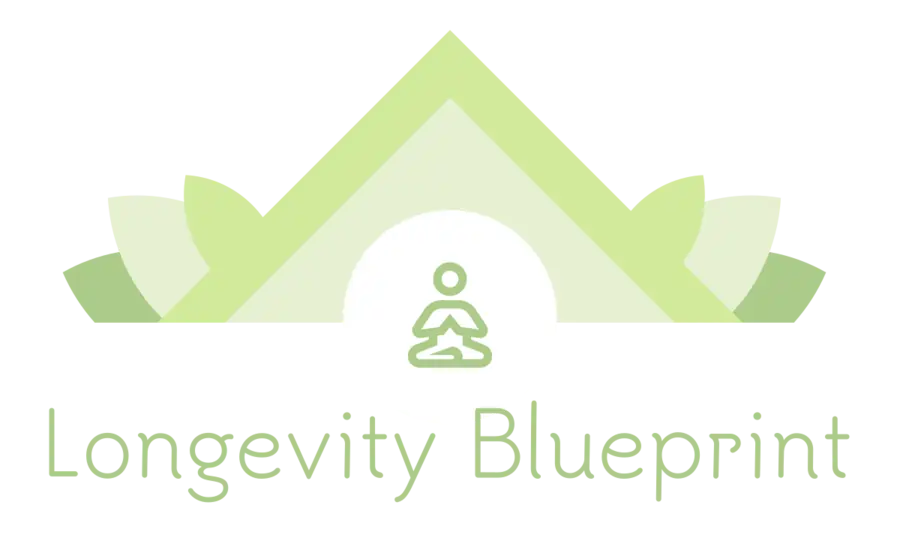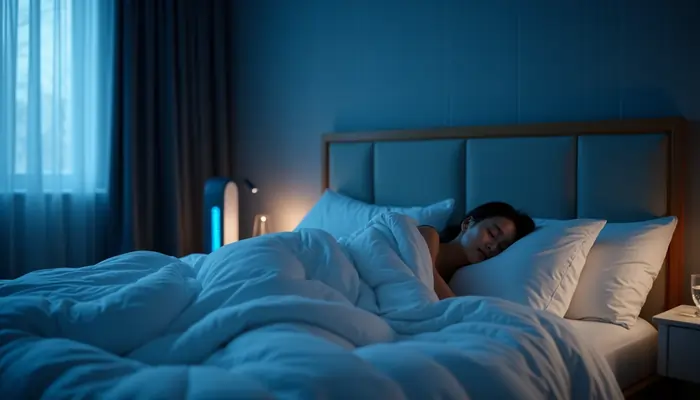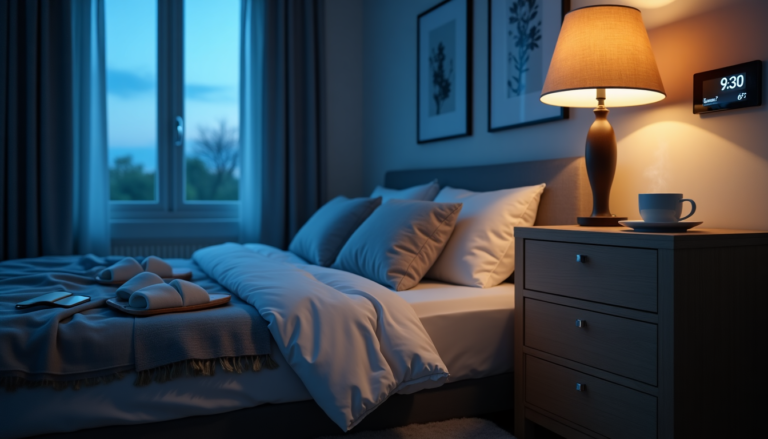The Hidden Benefits of Naps: What Science Says About Your Brain’s Recovery
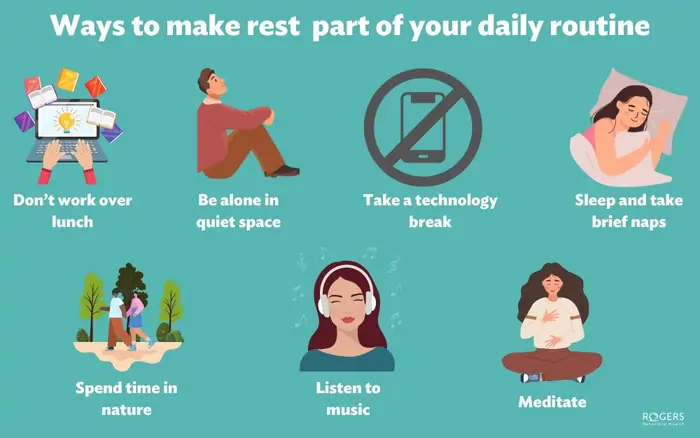
Naps do more than just make you feel refreshed. Research on benefits of naps shows that people who nap regularly gain an impressive 15.8 cm³ in total brain volume. This boost equals taking 2.6 to 6.5 years off your brain’s age. Many people see napping as a luxury they can’t fit into their day, but science proves it plays a vital role in keeping our brains healthy.
Research has shown that naps between 30 to 90 minutes can boost cognitive functions, especially when you have aging adults. The timing needs careful consideration – naps that go beyond 90 minutes could disrupt your night’s sleep. A large study from China revealed an interesting trend: about 60% of people over 65 take hour-long naps after lunch.
This piece breaks down the science behind napping benefits. You’ll learn how different nap lengths affect your brain and why smart napping could be your key to better mental performance. The surprising link between your napping habits and long-term brain health will help you make the most of your rest periods.
“Short 10-20 minute naps can provide significant cognitive benefits without the grogginess of sleep inertia. These ‘power naps’ are ideal for a midday reset in most adults.” — Dr. Rebecca Robbins, Sleep Scientist at Harvard Medical School
📺 **Watch Short version Now: Benefits of Naps **
The Science Behind Benefits of Naps and Brain Recovery
Sleep architecture changes a lot during naps compared to nighttime sleep. Your brain’s ability to focus and be creative resets even with short rest periods. This happens because of the differences in sleep patterns.
How sleep cycles work during short naps
Sleep isn’t one continuous state. Your brain goes through different stages with unique physical characteristics. During naps, your brain cycles through non-rapid eye movement (NREM) stages. These include light sleep (N1 and N2) and deep sleep (N3). REM sleep follows if you nap long enough [1].
Age affects how naps work. Babies have REM-rich naps that look just like their nighttime sleep. Young children’s naps mostly contain NREM sleep with very little REM [1]. Adults’ nap patterns depend on when and how long they sleep. Morning naps tend to have more REM sleep because of our body clock. Afternoon naps usually have more NREM sleep [1].
The role of adenosine in sleep pressure
Your brain builds up a substance called adenosine while you’re awake. This byproduct from cell energy use makes you feel tired. Scientists call this buildup “sleep pressure” [2].
Adenosine blocks neurons that keep you awake in several brain areas:
- In the basal forebrain, adenosine inhibits wake-active neurons [3]
- In the hypothalamus, it inhibits wake-promoting hypocretin/orexin neurons [3]
- In the mesopontine tegmentum, it reduces activity in cholinergic arousal systems [3]
A quick nap can lower adenosine levels by a lot. This resets your brain’s “tiredness meter” [1]. That’s why short naps can make you feel more alert and perform better for up to three hours [4].
What happens in your brain during different nap durations
Each nap length affects your brain differently:
5-15 minute “ultra-short” naps make you alert right away without making you feel groggy. These quick naps mostly contain light NREM sleep. They boost alertness by letting wake-active cells recover quickly [5].
20-30 minute naps help you think better, stay alert, and remember more without making you feel sleepy after. Research shows these naps boost memory, attention, and creativity [6].
30-90 minute naps bring on deep slow-wave sleep. This cleans toxins from your brain and moves memories into long-term storage [4]. You might feel groggy right after these longer naps, but the benefits last many hours [5].
Naps longer than 90 minutes usually complete a full sleep cycle. These provide the best brain benefits but might make it harder to sleep at night [6].
Related post: How to Keep Your Brain Sharp After 40
Resources: Sleep Foundation, National Institutes of Health, Journal of Sleep Research
Memory Enhancement: How Naps Strengthen Learning
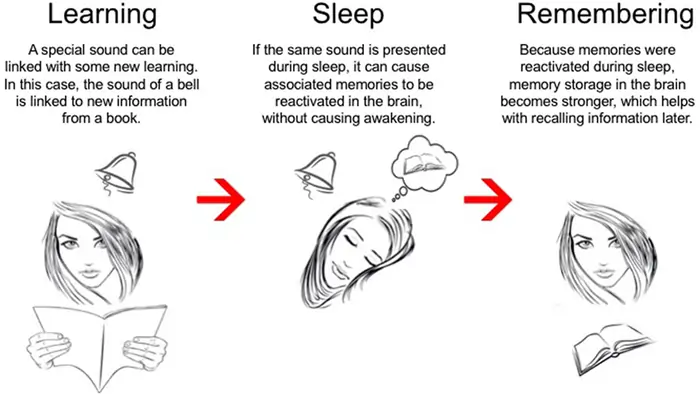
Image Source: Frontiers for Young Minds
A well-timed nap could be your hidden advantage to boost memory power. Studies keep showing that benefits of naps help you remember things better than other ways of resting, both right away and later on.
Short naps and working memory improvement
Just a little sleep can boost your brain’s ability to hold and use information. A study showed that people who took 90-minute naps did much better at visual memory tasks [7]. These nappers were 1.26 times more likely to remember things correctly than those who stayed awake [7].
Your brain gets these benefits whether you’re used to napping or not [8]. The positive changes show up in several ways:
- Better alertness and focus
- Faster responses to what you see
- More accurate visual memory
The connection between napping and long-term memory consolidation
Benefits of Naps do more than help you remember things right now. Scientists found that napping starts a process that turns quick memories into lasting knowledge [9]. Your brain strengthens and reorganizes its connections during this time.
Different types of memories get stored in unique ways. The largest longitudinal study of 54 cases showed big improvements in remembering facts and events, with a 0.376 effect size. Learning skills and tasks got an even bigger boost at 0.494 [10]. Your brain also tends to keep emotional memories that matter most during naps [9].
Why napping before studying may be better than cramming
Students often wonder if they should nap or cram before tests. Science now gives us a clear answer. Both methods helped people remember better after 30 minutes [11]. But a week later, only the people who napped managed to keep their edge [11].
“Napping between learning sessions leads to more enduring memories than cramming,” the research team noted [12]. On top of that, students who took naps felt more awake in their next study sessions and learned new information better [12].
Resources: Journal of American Geriatrics Society, Journal of Sleep Research, National Institutes of Health
“What many people don’t realize is that napping can be a powerful tool for emotional regulation. Just 30 minutes of daytime sleep can reduce stress hormones and improve emotional resilience.” — Dr. Sara Mednick, Professor of Cognitive Science at UC Irvine
Emotional Benefits of Napping: Beyond Just Rest

Image Source: Rogers Behavioral Health
Your afternoon nap does more than just recharge your mental batteries—it fine-tunes your emotional state. Scientists found that there was a fundamental change in how you process and respond to emotional experiences throughout the day, even after brief daytime sleep.
How naps regulate emotional reactivity
Benefits of Naps can help balance emotional responses by refreshing your brain’s ability to feel empathy. Research shows that people who take a 60-90 minute nap with REM sleep respond better to happy faces. Those who skip naps react more strongly to anger and fear [13]. This pattern shows up in all age groups. Children handle challenging situations better on days they take their midday nap [14].
Naps change specific emotions in unexpected ways. They reduce negative bias and help you recognize positive emotions more easily [13]. This emotional balance happens because sleep, especially REM sleep, helps your brain properly store new experiences into existing memory networks [15].
The benefits go beyond just emotional balance. Naps with enough REM sleep help process tough emotional experiences. They take the emotional sting out of difficult memories while keeping the important details intact [16].
Stress reduction and cortisol levels during naps
A 2-hour midafternoon nap after missing sleep lowers cortisol levels during the nap [6]. Your cortisol levels rise after the nap, which helps you stay alert [6]. This new pattern of cortisol release helps your body manage stress hormones better.
Naps also decrease interleukin-6 (IL-6), an inflammation marker that stress triggers, both during and after rest [6]. These body changes explain why:
- Naps reduce your overall stress levels
- Regular nappers stay more alert [17]
- Short naps can offset the stress that comes from not getting enough sleep [2]
Resources: Journal of Sleep Research, Nature Scientific Reports, Mayo Clinic
Optimizing Your Nap for Maximum Brain Benefits
The science of napping needs strategic planning to get the most from your midday rest. Research shows that proper optimization can significantly impact how refreshed you feel afterward.
Finding your ideal nap duration
Dr. Sarah Hussain, medical director of the Sleep Center at Kettering Health, suggests a 10-20 minute nap gives you a quick energy boost [18]. This short duration helps you stay alert without feeling groggy. A 30-minute nap can improve your memory, stamina, creativity, mood, and help with weight loss [18].
You might want to try a 60-90 minute nap that completes a full sleep cycle—but be careful since longer naps often make you feel groggy afterward [18]. Research indicates that 30-minute naps specifically help with memory encoding compared to other lengths [19].
The perfect timing: why early afternoon naps work best
Your body naturally feels tired between 1-3 p.m. due to circadian rhythm changes, making this the best time to nap [18]. Sleep experts recommend avoiding naps after 4 p.m. as they can affect your night’s sleep [18]. Taking your nap 8+ hours before bedtime helps maintain good evening sleep quality [2].
Creating the optimal napping environment
Your nap space should include:
- Dark and cool – Blackout curtains or an eye mask help block light [18]
- Quiet – Earplugs or white noise can block unwanted sounds [3]
- Comfortable – Good pillows and breathable fabrics make a difference [20]
Setting an alarm is vital—people who guess their sleep duration often oversleep and wake up groggy [3].
The ‘caffeine nap’ technique to improve alertness
The “caffeine nap” combines two ways to boost alertness. Drink about 200mg of caffeine (two cups of coffee) right before a 15-20 minute nap [21]. Caffeine takes 20-25 minutes to reach your bloodstream, so you’ll wake up just as it starts working [22].
Research shows that people who took caffeine-naps performed better on cognitive tests and stayed alert longer without extra sleep [23]. This method works because your nap clears adenosine while caffeine blocks adenosine receptors, which maximizes alertness when you wake up [21].
Resources: Sleep Foundation, Journal of Sleep Research, Mayo Clinic
When Napping May Signal Health Concerns
While napping offers numerous benefits, excessive daytime sleepiness requiring frequent naps may sometimes indicate underlying health issues:
- Sleep Disorders: Conditions like sleep apnea or narcolepsy can cause excessive daytime sleepiness
- Medication Effects: Certain medications may increase drowsiness and napping needs
- Depression: Research shows a bidirectional relationship between excessive napping and depression
- Cardiovascular Issues: Some studies have found associations between frequent, long naps (>60 minutes) and increased cardiovascular risk
When to Consult a Healthcare Provider
You have difficulty staying awake during important daytime activities
Your napping need has suddenly increased without lifestyle changes
You experience unrefreshing naps that don’t improve alertness
You feel excessively sleepy despite adequate nighttime sleep
How Napping Changes with Age
Children (1-5 years)
- Recommended Duration: 1-3 hours
- Benefits: Essential for cognitive development, memory consolidation, and emotional regulation
- Physiological Factors: Higher proportion of REM sleep during naps, supporting neural development
Adolescents (13-17 years)
- Recommended Duration: 30-45 minutes
- Benefits: Counteracts puberty-related sleep schedule shifts, improves academic performance
- Timing Considerations: Early afternoon naps (before 4pm) to avoid disrupting nighttime sleep
Adults (18-64 years)
- Recommended Duration: 10-30 minutes for alertness; 90 minutes for creativity/memory
- Benefits: Improves cognitive performance, reduces stress, enhances problem-solving
- Workplace Applications: Strategic timing before important meetings or creative tasks
Older Adults (65+ years)
Considerations: Earlier napping (before 3pm) to preserve nighttime sleep architecture
Recommended Duration: 30-45 minutes
Benefits: Compensates for age-related changes in nighttime sleep quality
Creating the Optimal Napping Environment
Home Napping Setup
- Temperature: Set thermostat to 65-68°F (18-20°C), the ideal range for falling asleep quickly
- Light Control: Use blackout curtains or a sleep mask (our tests found the Nidra Deep Rest mask most effective)
- Sound Management: White noise machines or apps can mask disruptive environmental sounds
- Comfort Elements: Dedicated nap blanket and proper neck support (a specialized nap pillow rather than bed pillows)
Workplace Napping Solutions
- Office Setups: Under-desk foot hammocks, ergonomic recliners, or dedicated quiet rooms
- Car Napping: Window shades, neck pillows, and phone timer settings for safe parking lot naps
- Minimalist Approach: Eye mask + noise-cancelling earbuds + “do not disturb” phone setting
Travel Napping Kit
Time Zone Adjustment: Strategic napping protocol for minimizing jet lag (timed 20-minute naps)
Essential Components: Inflatable neck pillow, eye mask, earplugs, and a light breathable blanket
Digital Aids: Apps like “Power Nap” with specialized wake cycles and gentle alarms
Conclusion
Science shows that benefits of naps do more than boost energy – they actively shape our brain’s health, memory, and emotional well-being. Research proves that proper napping can increase brain volume, improve cognitive performance, and provide emotional balance throughout the day.
The solution lies in finding your personal sweet spot. A 20-minute power nap works well for quick alertness, and longer 30-90 minute naps can help with memory consolidation and emotional processing. Naps taken in early afternoon match our natural circadian rhythms and work best for brain recovery.
The evidence supporting napping’s positive effects on brain health makes a strong case. Strategic napping provides a natural and available way to boost memory retention, regulate emotions, and maintain sharper cognitive function that supports your brain’s needs.
You should try different nap durations and times to find what fits your schedule and goals best. A good environment and consistent timing will give you the best results.
Resources:
- National Sleep Foundation (sleepfoundation.org)
- Mayo Clinic Sleep Center (mayoclinic.org/sleep)
- National Institutes of Health (nih.gov)
FAQs
How long should a nap be for optimal brain benefits?
The ideal nap duration depends on your goals. A 10-20 minute nap can provide a quick energy boost without grogginess. For memory benefits, aim for 30 minutes. A 60-90 minute nap allows for a complete sleep cycle but may cause temporary grogginess upon waking.
Can napping improve memory and learning?
Yes, napping can significantly enhance both short-term recall and long-term memory consolidation. Studies show that napping before studying is more effective than cramming, as it leads to more enduring memories and improved ability to absorb new information.
How do naps affect emotional well-being?
Naps can recalibrate your emotional state by regulating emotional reactivity. They help decrease negative bias while enhancing recognition of positive emotions. Napping also reduces stress levels by lowering cortisol and inflammatory markers in the body.
What is the best time of day to take a nap?
The optimal time for napping is between 1-3 p.m., which aligns with the natural dip in our circadian rhythm. It’s advisable to avoid napping after 4 p.m. as it may interfere with nighttime sleep. Scheduling your nap at least 8 hours before bedtime helps preserve evening sleep quality.
What is the “caffeine nap” technique?
The “caffeine nap” involves consuming about 200mg of caffeine (equivalent to two cups of coffee) immediately before a 15-20 minute nap. This technique combines the alertness-boosting effects of both caffeine and napping, as you wake up just as the caffeine begins to take effect, maximizing alertness.
References
[1] – https://pmc.ncbi.nlm.nih.gov/articles/PMC5598771/
[2] – https://www.sleepfoundation.org/napping
[3] – https://blog.mops.org/nap-hacks/
[4] – https://neuroleadership.com/your-brain-at-work/neuroscience-of-napping
[5] – https://pubmed.ncbi.nlm.nih.gov/21075238/
[6] – https://journals.physiology.org/doi/full/10.1152/ajpendo.00651.2005
[7] – https://pubmed.ncbi.nlm.nih.gov/30051361/
[8] – https://www.nature.com/articles/s41598-018-33209-0
[9] – https://pmc.ncbi.nlm.nih.gov/articles/PMC5846328/
[10] – https://www.sciencedirect.com/science/article/pii/S108707922200079X
[11] – https://pubmed.ncbi.nlm.nih.gov/30371902/
[12] – https://academic.oup.com/sleep/article-abstract/42/1/zsy207/5146032
[13] – https://aasm.org/naps-with-rapid-eye-movement-rem-sleep-increase-receptiveness-to-positive-emotion/
[14] – https://www.psychologytoday.com/us/blog/social-instincts/202308/what-you-should-consider-before-you-take-the-midday-nap
[15] – https://www.nature.com/articles/s41598-021-83838-1
[16] – https://www.sciencedirect.com/science/article/abs/pii/S1074742710001735
[17] – https://www.sciencedirect.com/science/article/abs/pii/S1389945724001898
[18] – https://ketteringhealth.org/mastering-the-art-of-napping/
[19] – https://pmc.ncbi.nlm.nih.gov/articles/PMC10091091/
[20] – https://alaskankingbeds.com/blogs/bedtime-reading/the-perfect-nap-how-to-create-an-ideal-napping-environment?srsltid=AfmBOorsgVv0E2vQ4wbIdfjiN9lvIPX0_pu-lD_Oj6AQva-VLMCfFXNn
[21] – https://www.healthline.com/nutrition/coffee-nap
[22] – https://www.washingtonpost.com/wellness/2025/01/16/naps-cognition-memory-strategies/
[23] – https://sleepopolis.com/education/caffeine-nap/
